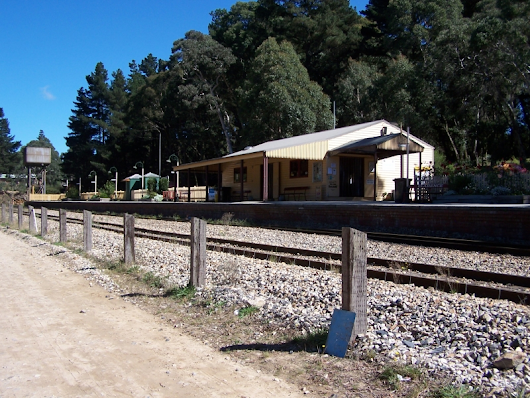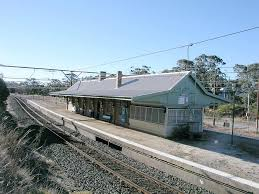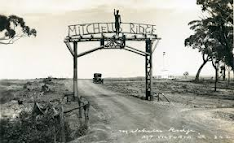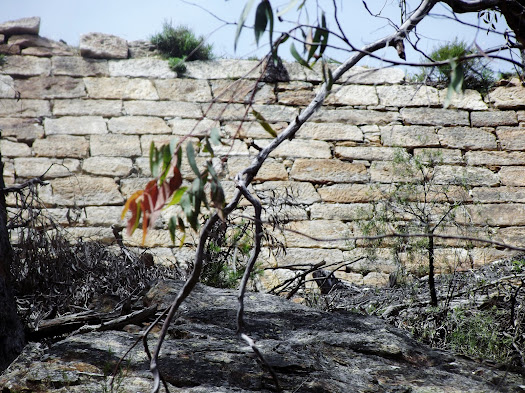WILLIAM ROMAINE GOVETT
 William Romaine Govett (1807-1848), surveyor, was born on 3 October 1807 at Tiverton, Devon, England, the third son of John Govett, surgeon, and his wife Susanna Price, née Owen. He was at Blundell's School, Tiverton, from 1817 to 1820. He was appointed assistant surveyor in the Surveyor-General's Department of New South Wales on 10 July 1827 at £240 a year, reached Sydney in the Asia next December and began work on (Sir) Thomas Mitchell's staff. Part of his work included surveying on the old Bathurst road, during which he discovered Govett's Leap in the Blue Mountains, which was named by Mitchell in his honour. Mitchell was pleased with Govett and described him in a report on the department in 1832 as a wild young man who needed control, who had come to the colony ignorant of surveying but with much natural talent had become perhaps the ablest delineator of ground in the department, and who was remarkably clever at dealing with unexplored country.
William Romaine Govett (1807-1848), surveyor, was born on 3 October 1807 at Tiverton, Devon, England, the third son of John Govett, surgeon, and his wife Susanna Price, née Owen. He was at Blundell's School, Tiverton, from 1817 to 1820. He was appointed assistant surveyor in the Surveyor-General's Department of New South Wales on 10 July 1827 at £240 a year, reached Sydney in the Asia next December and began work on (Sir) Thomas Mitchell's staff. Part of his work included surveying on the old Bathurst road, during which he discovered Govett's Leap in the Blue Mountains, which was named by Mitchell in his honour. Mitchell was pleased with Govett and described him in a report on the department in 1832 as a wild young man who needed control, who had come to the colony ignorant of surveying but with much natural talent had become perhaps the ablest delineator of ground in the department, and who was remarkably clever at dealing with unexplored country.
In February 1829 Govett was sent to the Hawkesbury River, where many farms required measurement, but in 1833 his career ended abruptly when the department was reduced. Govett returned to England in the Ann in March 1834 with a letter of recommendation from Mitchell to the British government. After his return to England Govett lived at Tiverton, where he wrote several articles on New South Wales which were published in the Saturday Magazine between 7 May 1836 and 2 September 1837 under the title 'Sketches of New South Wales'. They dealt with such topics as the nature of the country he had helped to survey, the habits of the Aboriginals, and life in Sydney; they were illustrated with twelve paintings by Govett, which were later advertised for sale by G. Michelmore & Co.
Govett appears to have undergone a personal crisis after his return and repented of his wild early life, but although he considered going abroad again and making a fresh beginning he did not live long and died on 22 August 1848 in London."
This article was published in hardcopy in Australian Dictionary of Biography, Volume 1, (Melbourne University Press), 1966
From Govett's descriptions it appears that the discovery of the famous waterfall named after him by Sir Thomas Mitchell was not made at what is now "Govett's Leap Lookout" but at the point where Govett's Leap Brook meets the cliff edge near Barrow Lookout. The monument was placed at Govett's Leap Lookout as this is the place where visitors are most likely to see it.
Govett went on to discover what we know as Mt Wilson.
Govett's Leap's location matches the place mentioned by Assistant Surveyor William Romaine Govett in his letter to Surveyor General Major Thomas Mitchell dated 1st July 1831. “The Creek near ‘Blackheath’ after running about two miles and a half falls abruptly after the manner of the cascade at the ‘Weatherboard’ into one of the Gullies of the Grose River; at a point near this fall of water you have a grand view of two cascades, and that break of rock which forms such a particular (feature) in this Survey. Indeed I have not as yet seen a view which shews (sic) so well the character of the mountain feature …”. (Quoted from “Blackheath Today from Yesterday” p 131, edited by Peter C Rickwood and David J West, 2005).
 |
| Govett's Leap from Barrow Lookout |
No doubt Govett discovered the waterfall by following the creek we now know as Govett’s Leap Brook, rather than the ridge which ends with the present day Govett’s Leap Lookout. We need to take note at this point that the correct name for the waterfall is “Govett’s Leap” (not the Bridal Veil or Bridal Veil Falls), which name appears to have been given by Mitchell soon after Govett’s discovery. The monument at Govett’s Leap Lookout reads as follows: “This fall of water was named Govett’s Leap from the circumstance of William Romaine Govett Assistant Surveyor first having come upon the spot in June 1831”.
This concise statement of the facts is in stark contrast to the bizarre stories that abounded from the early 1870’s onwards, which had Govett as a bushranger, an escaped convict or convict overseer, a murderer and general vagabond. His “leap” was supposed to have been on horseback over a rocky gully (which he and his horse survived) or over the cliff (in which case they didn’t). Those responsible for promoting tourism in Blackheath could have easily contradicted these wild stories; however it seems that they used them to promote interest in the town and district. Even today poor Govett is seldom shown the respect he deserves.
All New England and other Geology blogs and video
Limestone Caves of NSW
Song Studies. Bible studies based on hymns and songs
Shoalhaven District Geology.






























